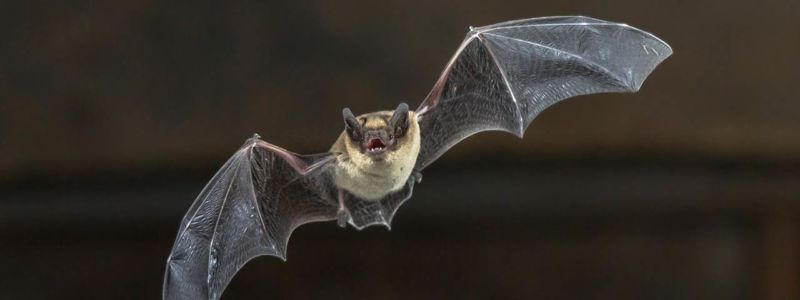
In mammals, there's a relatively simple relationship among metabolism, body mass, and lifespan. For the most part, as the size of the mammal goes up, its metabolism slows down and its longevity increases. There are exceptions, and we are one of them. We're much longer lived than other mammals with a similar body mass. Bears, which tend to weigh quite a bit more than us, rarely live past 30.
But a new paper about longevity includes a remarkable statistic: "Nineteen species of mammals live longer than humans, given their body size, of which 18 are bats." What is it about bats that's so exceptional? A new study takes a careful look at bat aging and finds, at a time when most species are shutting down genes that help keep cells and tissues healthy, bats are cranking them up.
Mini-Methuselahs
To an extent, bats have an advantage, in that flight selects for minimizing body weight. But even by that standard, some bat species are extraordinarily long-lived. The Irish-French team behind the new study notes that a species called Brandt's bat weighs only about seven grams, yet lives for over 40 years in the wild. There have been some hints as to how they manage this exceptional aging. For example, bats maintain the ends of their chromosomes, preventing cells from slipping into senescence, yet they do this while managing to keep cells from growing out of control and turning cancerous.
To take a systematic look at what's going on, the researchers worked with a related species of bats that can live for over 25 years. The bats were captured, the researchers took blood samples, tagged them, and then released them. Six years later, they repeated the process, getting data for 100 different bats and opening a window into how the bats had changed during aging. They tracked which genes were active at each time point, allowing them to track how the bats' blood cells were changing with age.
Individual bats will see changes in gene activity because they have different histories and encounter different environmental conditions (the bats came from five different colonies). So the researchers looked for differences in gene activity that were present in the majority of the samples at the later date. These were relatively small in number; the scientists estimate that only about nine percent of the total differences in gene activity are associated with aging.
But within that nine percent were some genes that stood out. Most of the age-related difference could be accounted for by 100 genes with the largest changes in activity. And these were enriched in genes involved in processes that keep cells healthy: repairing DNA damage and digesting and recycling damaged components figured prominently. Other genes with increased activity help stop cells from dividing. And the bat maintains its chromosome ends through a pathway that doesn't seem to involve telomerase, the enzyme most frequently associated with that activity.
Cross-mammal comparisons
To get a better sense of how unusual bats are, the researchers turned to public databases of similar studies done in mice, wolves, and humans. The four species show a few things in common, such as a declining immune responses and reduced metabolic activity. In contrast to the other three mammals, though, bats don't seem to have an increase in inflammation as they age. They also have a few changes in gene activity that extend the lifespan of experimental organisms. But to some extent, every mammal analyzed here has some unique aspects to how it handles aging, so it's tough to generalized based on four of them.
The other thing the researchers looked at were micro-RNAs, or short sequences of RNA that regulate the activity of other genes. Here, they found that the bats increase the levels of micro-RNAs that shut down cell division, while lowering the levels of those that promote it. This is in keeping with the other evidence that bats manage to limit cancer incidence with age.
The authors argue that their work provides a new perspective on the process of aging, one we can't get with the usual approach of trying to extend the lifespan of experimental animals, which are normally short-lived. But it's important to note that this work is limited in its own way, as it only looks at blood cells, when many important changes associated with aging undoubtedly take place in other tissues.
There's also a related issue that has to do with the strong links between aging, body size, and metabolism. Flight is very metabolically demanding, and flying species seem to have evolved ways of lessening the damage that's otherwise caused by high metabolic activity. (For example, like birds, bats have a relatively compact genome compared to related lineages.) It could be that at least part of their longevity is the product of their adaption to flight.
Still, even with these complications, the study provides further hints of what might be involved in extending lifespan in a way that includes good health. And it reinforces lots of other indications that bats have a pretty amazing lineage.
Nature Ecology and Evolution, 2019. DOI: 10.1038/s41559-019-0913-3 (About DOIs).
from Hacker News https://ift.tt/3sTk1LG
No comments:
Post a Comment
Note: Only a member of this blog may post a comment.